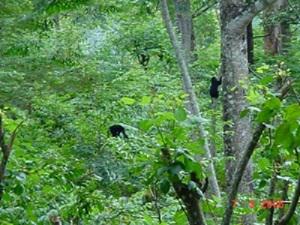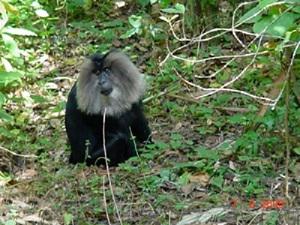Joseph Shijo
The project aims to interlink the isolated populations of Lion-tailed macaque living in the forest fragments in Anamalai hills by identifying the potential wildlife corridors between the forest fragments and adjacent protected area. A matrix of variables from ecology, economics, sociology and politics will be considered while delineating the corridors.

Lion-Tailed Macaque in the rainforest fragment.
Lion-tailed Macaque (Macaca silenus) is an Endangered primate whose total number of mature individuals is less than 2,500 with no subpopulation having more than 250 mature individuals. This species is endemic to the rainforests of the Western Ghats biodiversity hotspot in India. The total population is scattered into 49 subpopulations at 8 locations. There are estimates of a continued decline of over 20% of the populations in the next 25 years.

Lion-Tailed Macaque on the ground.
Anamalai hills in Western Ghats are one among the locations where Lion-tailed macaque inhabits. These hills once had the largest contiguous tracts of rain forests. However, it was extensively clear felled in early 1900’s for cultivation of tea, coffee, teak and eucalyptus plantations leaving behind several forest fragments in the middle of plantations. Approximately fifty percentage of the present lion-tailed macaque population in Anamalai hills reside in these fragments. These populations are highly vulnerable to inbreeding depression and disease outbreak. In addition a minor change in their habitat quality could wipe out the entire populations from these fragments.
Hence, the present study intends to delineate suitable wildlife corridors in between the fragments and the adjacent protected area by considering the ecological, economic, social, and political situations in the hills. A landscape level analysis, field based habitat quality assessment, informal meetings with stakeholders and spatial multi-criteria decision analysis are being planned in the proposed project. The proposed work could be projected as a model study to highlight the implementation of conservation practices in human dominated landscapes through a participatory approach.